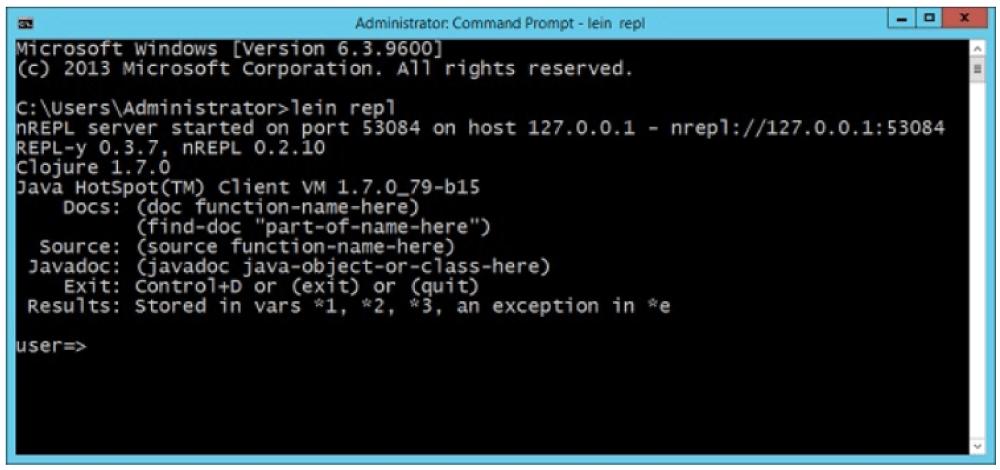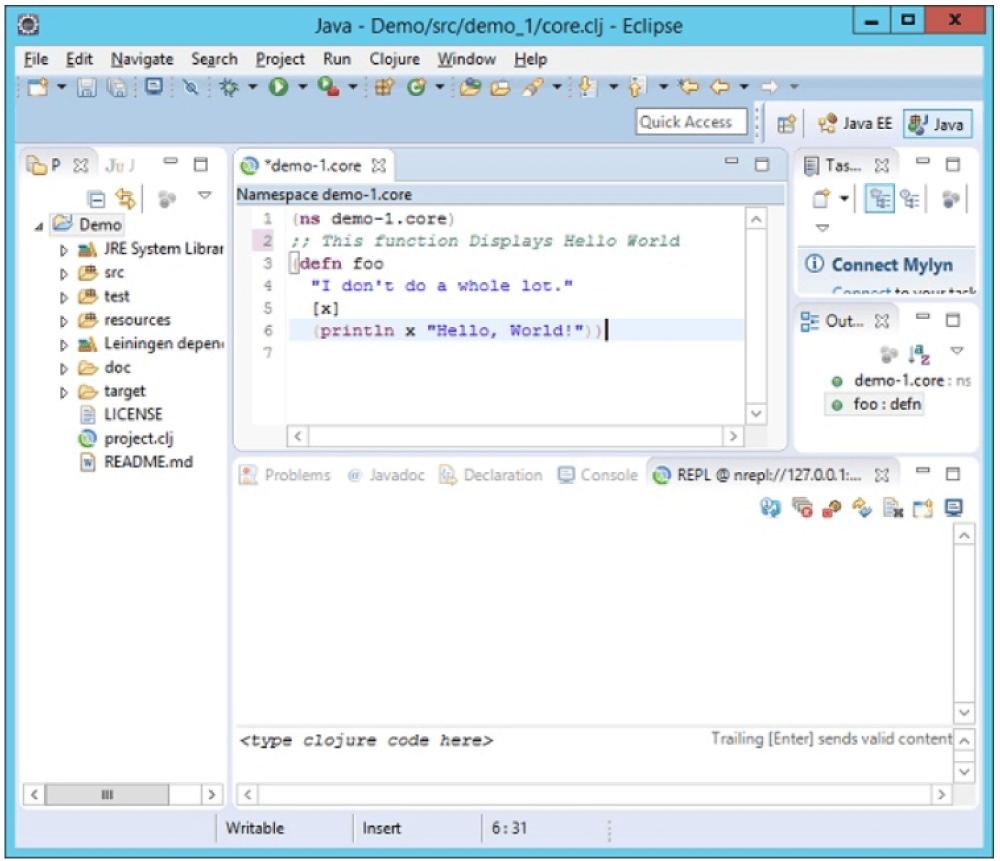- Abstraction in Java
- Control Statements in Java
- Core Java Interview Questions
- Data Types in java
- Top 9 Java EE Frameworks
- Java EE vs Spring Framework
- Java Frameworks List - Top 14 Java Frameworks
- Java Interview Questions
- Java Tutorial
- Java Web Dynpro Interview Questions
- JavaFX Interview Questions
- Method Overloading in Java
- Multithreading in Java
- List of Popular Open Source Java Build tools
- Operators in Java
- Program Logics in Java
- String Handling in Java
- Why You Should Learn Java Programming
- Data Structures Interview Questions
- Exception Handling in Java
- Multithreading Interview Questions
- Design Patterns Interview Questions and Answers
- C++ Interview Questions and Answers
- JSP Interview Questions
- EJB Interview Questions
- SOAP in Web Services
- JPA Interview Questions
- DXC Interview Questions and Answers
- Java Architect Interview Questions
- Java Concurrency Interview Questions
- What is Java Concurrency?
- What is JPA - Complete Tutorial Guide
- What is EJB?
- Java Collections Interview Questions
- Java Swing Tutorial
- Java Stream Tutorial
- Linked List Interview Questions
- Compiler Design Interview Questions
- Java Collection Tutorial
- Java Stream Interview Questions
- Thymeleaf vs JSP
- Thymeleaf Tutorial - What is Thymeleaf
- Socket Programming in Java - What is TCP
- Apache Tomcat Interview Questions
- Capgemini Interview Questions
- Zoho Interview Questions
- PwC Interview Questions
- Hexaware Interview Questions
- Intuit Interview Questions
- Tech Mahindra Interview Questions
- Qualcomm Interview Questions
- Arcesium Interview Questions
- PayTM Interview Questions
- DXC Technology Interview Questions
- Java Developer Job Description
- MAQ Software Interview Questions
- Amdocs Interview Questions
- TCS NQT Interview Questions
- Virtusa Interview Questions
- Siemens Interview Questions
- Tricky Java Interview Questions
In this Clojure tutorial, we will start from the basics of Clojure and learn all the major concepts of Clojure.
| Clojure Tutorial - Table of Content |
What is Clojure?
Clojure is a multi-paradigm, functional programming language that runs on multiple and distinctive hosts. JVM or Java Virtual Machine is one of the popular hosts in the world to run Clojure. Further, Clojure also has complete access to the entirety of the Java Development Kit and Java Functions. Programmers will find Java Development Kit and Java Functions out-of-box with Clojure. Additionally, programmers can also access JavaScript runtime through Clojure through either a node or a browser.
Like its counterparts, Clojure is very much similar to other Lisp dialects where it treats Clojure as the core data alongside a Lisp macro system. Given that Clojure's development process is community-driven, currently, it is being overseen by the programming language's core designer Rich Hickey who is also Clojure's Benevolent Dictator for Life. The flexibility of Clojure allows programmers to run on a handful of other ecosystems such as dot.net; however, the Java Runtime and Java Scripts are the primary supporting targets for the intuitive programming language.
| If you would like to become a Clojure Certified professional, "Clojure Online Training".This course will help you to achieve excellence in this domain. |
Why Clojure?
Suppose you're building a new business or even overseeing the development of the existing business. In that case, the first-ever crucial thing to do is choose a language that you'll preferably rely on from the day of inception to your retirement. In the world of programming languages, certain people consider choosing Clojure as an unconventional choice, but it has seen a massive amount of adaptability. The programming language is very much different from the mainstream options.
Let's take a look at why you should choose Clojure over the conventional and mainstream programming languages:
1. It is the best of both worlds
There are two kinds of programming languages, programming languages that offer ripple orientation and dynamism. On the other hand, there are programming languages that are strong and have significant scaling. By the looks of it, this is where Clojure comes in; Clojure as a programming language offers a knob to developers or programmers to tune. For instance, programmers can rely on Clojure's dynamic side simultaneously, and the programming language allows programmers to delve towards the performance, scale, and strength. Getting the benefits of both sides is possible through Clojure.
2. Simple and Data-oriented
Over the two decades in the world of software development, it is evident that less coding is better. Data orientation correlates with smaller codebases. Everything is complicated in computer programming first; however, having something simple could save your time and effort. With Clojure, you won't have to rely on thousands of code lines at all times. The best part is that you have all the right to stay agile as you could with sophisticated programming languages.
3. A smart people's choice
Smart people generally use Clojure to create an excellent opportunity for other intelligent people to utilize.
Features of Clojure
Clojure comes with a set of intuitive and useful features that forms together with a coherent, simple and extremely powerful tool:
#1: Functional Programming
Clojure delivers the tools that avoid the conventional mutable state, emphasizes recursive iteration rather than looping with side effects, and provides functions that act like first-class objects. Clojure is completely impure; however, it supports the philosophy that all the programs are fully functional, making it stronger than ever.
#2: Dynamic Development
Clojure features a dynamic ecosystem that allows programmers and developers to interact. The language constructs are reified, which is why they can be changed and examined. Moreover, you can also grow the program with loaded data, fixing bugs, adding features, unbroken streams, and testing.
#3: Runtime Polymorphism
It is effortless for a system that runs with polymorphism to extend and change. Clojure does offer flexible, powerful, yet simple mechanisms for the overall runtime polymorphism. The embedded data types and protocols in Clojure aids in adding tools to oversee abstraction and data structure. Further, it doesn't compromise any of the facilities of any host platform.
#4: LISP
As mentioned during the introduction, Clojure shares the traits of programming languages part of the LISP family. A distinctive feature of any LISP programming language is that it is made into several other languages. However, the overall approach of LISP as code-as-data and the macro system is still apart. In addition to this, the vectors, sets, and maps are regarded as a first-class the same way it is in LISP.
#5: Concurrent Programming
Clojure is hands-down one of the most simple multi-threaded programming languages in the world. In Clojure, core data structures are immutable, making it seamless to share between different threads readily. Clojure is also a functional language that further allows the core to change its state while providing an excellent mechanism by ensuring that things stay consistent when there is a state change. It even helps developers at the time of alleviating to avoid conflict like manually using up the locks.
#6: Hosted on Java Virtual Machine
Clojure is specially designed to become a programming language for hosting, which further shares the Java Virtual Machine system type, threads, GC, among others. All of the functions are compiled to the Java Virtual Machine bytecode. Furthermore, Clojure is a substantial consumer of Java libraries that provides dot-target-member notation to make calls for Java. Clojure also supports the implementation of both Java classes and interfaces.
| Related Article: Java Interview Questions and Answers |
A comprehensive tutorial on writing Clojure applications:
- Clojure programming language is known for its functional and expressiveness that further makes the language quite attractive. However, the language's approach to building applications can be a little; well, it needs a little brainstorming.
- Writing exopaste Pastebin application using Clojure
- Programmers can write a simple and straightforward Pastebin clone while exposing any service on a conventional HTTP port while storing pastes in the in-memory database.
- In essence, the Pastebin service allows programmers to paste the text's snippets into any form of web and retrieve any said content later through invariant URL. Additionally, it also allows sharing text quickly alongside code snippets on the internet. So far, the best example of exopaste service is Ubuntu Pastebin.
Choosing the appropriate Clojure libraries
The libraries that programmers can leverage are as follows:
- Aleph: The library is a resilient web server that boasts excellent performance characteristics that converge for new projects. Aleph also features a seamless HTTP client, which can easily leverage a similar thread pool when there is a requirement, which makes the webserver a lucrative option. However, programmers need to rely on all the power for leveraging on a simple Pastebin service. Moreover, programmers would appreciate the fact that they still have ample power right at their disposal.
- Component: As the name suggests, the component fits everything together. Components share the same trait as the cutting-edge injection frameworks, which is an integral part of Java. Additionally, it also allows users to write both specific and modular applications. Leveraging the sheer power of the component makes the paste service growable into a stronger back-end.
- Bidi: It is responsible for the routing of the library. Yes, there are other terrific options among Clojure's libraries like Compojure, but Bidi is the best choice as it works alongside ClojureScript right out-of-the-box. It also offers an exponential convenient bi-directional which also reflects on the name, approaches the routes. It also allows getting to know the overall course of any particular handler.
- Hiccup: It is an obvious choice for HTML templating. Hiccups also allow programmers for defining an HTML code as the overall data structure of Clojure. It also takes care of rendering HTML without any problem. The advantage of the approach is that the view ensures the use of tools and functions for creation.
Building Clojure with components
Clojure allows flexible run time for composing applications. If you're looking forward to kickstarting a simple clone for Pastebin, then the only components you'd need are a couple written below:
- You would have to rely on the web server component, which is excellent to handle aleph startup and the bidi routes.
- The next thing that you'd need is a store for in-memory where every paste data lives. You can make a component to allow articles to be built solely on the foundation. It makes the application save the entirety of the data in the comprehensive database.
What are the components in Clojure?
- Clojure records allow the implementation of components that you can pretend to be a Map where there is a declaration of the fields, where the functions are bound.
- Additionally, Clojure also allows defining protocols while declaring a distinctive functional group that oversees records' implementation.
Clojure's REPL
REPL, aka Read-Eval-Print-Loop, is a holistic tool to experiment with Clojure's code. Furthermore, it also allows users to initiate interaction with running programs and try things out seamlessly. It presents a prompt that allows for entering the code and reads all the input while printing and evaluating it. At the same time, it presents another prompt.
The process also enables a steadfast cycle for feedback that is not possible in other programming languages.
How to begin with REPL Session:
You can kick start with REPL session with Leiningen by merely typing this command in command line - lien repl
Then the following window will appear:

Then you can begin to evaluate commands in Clojure in the REPL window as you deem fit.
If you’re using Eclipse and want to start a session with REPL, then you must have to click on the Menu option and choose to Run As -Clojure Application.

The step will begin a new session in REPL is an entirely distinctive window right alongside console output.

As far as conceptuality is considered, REPL shares a striking similarity to the Secure Shell in a similar manner where users tend to use SSH to interact with remote servers. Clojure REPL empowers users to interact with an overall running process. The feature is compelling as you can attach REPL’s application to live to modify the program as it runs.
Special Variables
REPL hosts several variables which are quite useful in real-world applications. These variables are taken into consideration for evaluating the overall results for three expressions.
Take a look at the examples below:
user => "Hello"
Hello
user => "World"
World
user => (str *2 *1)
HelloWorldThe example sets a couple of strings sent to REPL’s window like ‘Hello’ and then ‘World’. Now, the 2nd and 1st variables will recall the last couple of expressions that can be put into the evaluation.
Clojure builds robust Decision-making structures
The structure for decision-making requires programmers to identify one or multiple conditions to evaluate and test done by the program. It also includes a statement(s) that will determine the truth about the situation.
Concurrent Programming
Most data types in Clojure’s programming are immutable. When things come down to concurrent programming, using codes by using data types that are completely safe even when codes are running on several processors. However, many-a-times, there will always be requirements for sharing data and also the instances of sharing data among more than one processor. Here, it becomes quite essential to ensure the data state maintains integrity while working alongside multiple processors. The process is called concurrent programming; Clojure provides the overall support for programming.
The STM or Software Transactional Memory System via ref, dosync, alter, set, etc. It supports the overall sharing and changing of the state among threads in a completely coordinated and synchronous manner—the to-and-fro motion of sharing and changing of states among threads in no-sync and independent methods. The Atomic system also supports the state between threads, which are in sync and separated at the same time. On the other hand, the productive var system supports separate states right within the threads.
There are several other computer programming languages that follow the model for concurrent programming:
- It possesses direct reference to data which does have the avenue to change.
- If users need shared access, the object becomes locked, and then the value changes. Further, the process continues for following entry to the said value.
Clojure doesn’t possess any locks. However, any indirect references made to immutable persistent data structures make the language an obvious choice.
Clojure has the following references in its ecosystem:
- Vars: Changes become secluded in threads.
- Refs: Changes are often in perfect sync, and it perfectly coordinates among threads.
- Agents: It involves not-sync independent changes in between threads.
Conclusion
Clojure is quite a practical LISP that is well-designed, lean that aids in writing lean yet maintainable code. It offers first-class support for both Java and JavaScript compatibility aids in leveraging the prevailing ecosystems. Many problems revolve around other programming language ecosystems which can be addressed seamlessly. It takes a functional approach for solving the problems which exist among programming languages. Clojure aids programmers to also address the ever-growing challenge that they face in the real world. The programming language also offers an extraordinary learning curve.
 On-Job Support Service
On-Job Support Service
Online Work Support for your on-job roles.

Our work-support plans provide precise options as per your project tasks. Whether you are a newbie or an experienced professional seeking assistance in completing project tasks, we are here with the following plans to meet your custom needs:
- Pay Per Hour
- Pay Per Week
- Monthly
| Name | Dates | |
|---|---|---|
| Clojure Training | Dec 16 to Dec 31 | View Details |
| Clojure Training | Dec 20 to Jan 04 | View Details |
| Clojure Training | Dec 23 to Jan 07 | View Details |
| Clojure Training | Dec 27 to Jan 11 | View Details |

As a content writer and storyteller, Raunaak Mitra regards himself to be a prodigy in writing. He firmly believes that language is borderless, and anyone can write as long as they have a strong narrative capability and the ability to emote feelings into words. Authors like F. Scott Fitzgerald and R. K. Narayan have influenced him to keep the writing as simple as possible for anyone to understand. Other than being well-versed about technological trends like AI, Machine Learning, AR, VR, Gaming, Microprocessors, Cloud Computing, Industry 4.0, literally any technological advancement (old or new), he also shares a knack to curate fiction on sci-fi, satire, and thriller genres.














